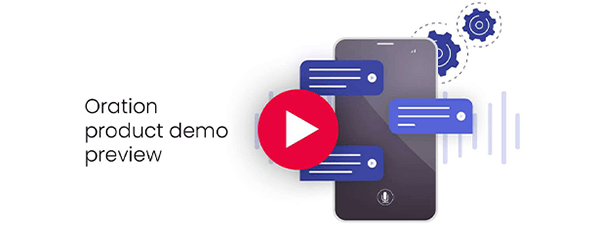It’s no secret that we are living in a customer-driven world. Contact centres face growing pressure to deliver exceptional service while managing increasing call volumes and operational complexities. Long wait times, inconsistent customer experiences and overwhelmed agents can quickly erode customer loyalty and harm your bottom line. To stay competitive, businesses must not only streamline their operations but also empower their teams to perform at their best. This is where workforce optimisation (WFO) comes in—providing the tools and strategies needed to boost efficiency, improve customer satisfaction and drive sustainable success.
Content Guide
What is workforce optimisation?
In business, much like in the human body, multiple systems must work together for optimal performance. Workforce optimisation (WFO) is the business equivalent of improving these processes, ensuring employees perform at their best. In contact centres, WFO combines technology and process improvements to boost employee efficiency, driving revenue and enhancing competitiveness.
How does workforce optimisation work in contact centres?
WFO is rooted in technology, enabling contact centres to manage high call volumes, reduce handling times and improve customer satisfaction. A key component of this is the use of tools like IVR systems, automation and analytics that provide real-time insights into performance, making it easier to resolve queries quickly and manage staffing levels effectively.
Benefits of workforce optimisation in contact centres
Workforce optimisation delivers a range of powerful benefits to contact centres, helping them operate more efficiently and deliver better service to their customers. Some of the key benefits include:
Improved customer experience
One of the most significant advantages of WFO is its impact on customer experience. By reducing wait times and providing faster, more accurate query resolutions, WFO ensures that customers receive the help they need without delays. Tools like intelligent IVR systems and automated workflows help route calls to the right agent or provide instant answers through self-service, reducing the frustration caused by long wait times. Additionally, advanced analytics allow contact centres to monitor customer satisfaction through post-call surveys and sentiment analysis, ensuring a continuous feedback loop that drives improvement. In a world where customer loyalty is heavily influenced by the quality of service, WFO plays a critical role in retaining customers and enhancing brand reputation.
Operational efficiency
WFO helps contact centres streamline their operations through automation and process optimisation. By automating routine tasks—such as call routing, FAQs and reporting—agents can focus on more complex queries that require human expertise. This not only reduces manual workload but also increases the speed and accuracy of handling customer issues. Performance management tools, such as real-time dashboards and analytics, enable managers to monitor agent productivity and adjust operations as needed, ensuring that resources are used efficiently. With workforce management systems in place, contact centres can anticipate peak call times, align staffing levels accordingly and avoid overstaffing or understaffing, resulting in a more agile and responsive operation.
Cost reduction
WFO is also a powerful tool for controlling and reducing costs. By optimising staffing levels, contact centres can avoid unnecessary expenses associated with overstaffing during quiet periods or being understaffed during peak times, which can lead to overtime payments and decreased productivity. Automated systems, such as self-service IVR or AI-driven chatbots, allow customers to resolve simpler queries without the need for agent intervention, further reducing operational costs. With the right WFO technology, contact centres can improve first-call resolution rates, which decreases the number of repeat calls and frees up resources for new interactions. The cumulative effect of streamlined operations, better workforce management and reduced call handling times leads to significant cost savings while maintaining high service levels.
How to implement workforce optimisation strategies
Implementing workforce optimisation in a contact centre involves a strategic combination of technology and process refinement. Here’s how to get started:
1. Assess current performance
The first step in any WFO strategy is to assess the current performance of your contact centre. This can be achieved by using analytics tools to gain real-time and historical insights into key performance metrics such as average handling times, call resolution rates and customer satisfaction levels. Identifying bottlenecks—whether it’s high call volumes during certain times or specific processes that slow down agent productivity—will help you pinpoint areas that need improvement. By thoroughly understanding where inefficiencies exist, you can tailor your optimisation efforts to address the most critical issues first, setting the foundation for a more streamlined operation.
2. Leverage automation
Automation is a critical component of workforce optimisation. Introducing technologies like IVR systems and automated workflows allows contact centres to handle routine queries more efficiently. By enabling customers to resolve common issues through self-service options—such as automated call routing, chatbots or pre-recorded information menus—agents are freed up to focus on more complex, high-value customer interactions. Automation not only speeds up processes and reduces waiting times, but it also increases accuracy, ensures consistency in responses and lowers the overall workload for agents, allowing them to perform at their best.
3. Training and development
For workforce optimisation to be truly effective, agents must have the right skills and knowledge to leverage the technologies and processes in place. Continuous training and development are essential to maintain high performance across the team. This includes equipping agents with the tools and training they need to excel in their roles, whether it’s mastering the latest customer service technologies, learning new communication techniques or staying updated on the products and services they support. A well-trained workforce not only boosts agent productivity but also enhances job satisfaction and retention, creating a positive feedback loop that benefits both the contact centre and its customers.
Workforce optimisation techniques in contact centres
In the contact centre environment, workforce optimisation can be achieved through a collection of key techniques. These generally fall into three main categories:
1. Performance management
Advanced IVR systems, like Oration, provide real-time dashboards with reporting tools that allow contact centre managers to track metrics like average handling times and customer satisfaction. These tools help managers assess agent performance, identify training needs and reward high performers, ensuring that the contact centre maintains high productivity and morale.
2. Quality control
Monitoring the quality of agent interactions is crucial for delivering exceptional customer experiences. Tools such as AI-based sentiment analysis, call recordings and post-call surveys offer managers insights into how customers feel during their interactions and the behaviours that impact customer satisfaction. These insights help improve consistency and drive better outcomes across the board.
3. Workforce management
Workforce management tools help align staffing levels with call volumes. Using analytics to predict peak periods and adjusting schedules accordingly ensures the right agents are available at the right times. This leads to greater efficiency and lower operational costs, as well as better employee engagement due to balanced workloads.
What to look for in a workforce optimisation provider
When choosing a workforce optimisation provider for your contact centre, it’s essential to consider the following factors to ensure you’re equipped with the right tools and capabilities:
Advanced technology
Your WFO provider should offer cutting-edge AI-powered tools to enhance efficiency. Solutions like Oration provide advanced IVR systems that use AI-driven sentiment analysis and real-time reporting. These features allow managers to assess agent performance instantly and route calls accurately based on customer intent. By leveraging tools like Oration, you can ensure your contact centre is equipped with technologies that boost productivity and improve customer experiences.
Scalability
A good WFO provider must offer a solution that can scale with your business as it grows. Oration is designed with scalability in mind, offering flexible cloud-based services that can handle fluctuating call volumes, whether during seasonal peaks or times of rapid growth. This flexibility allows your contact centre to dynamically adjust to changing customer needs without sacrificing performance or increasing costs.
Ease of integration
The workforce optimisation solution you choose should integrate seamlessly with your existing contact centre infrastructure. Oration excels in this area by offering plug-and-play capabilities, allowing you to implement its IVR and automation tools without extensive IT involvement. Its compatibility with other platforms ensures a smooth transition and minimises disruption to your operations, making it easy to get up and running quickly.







